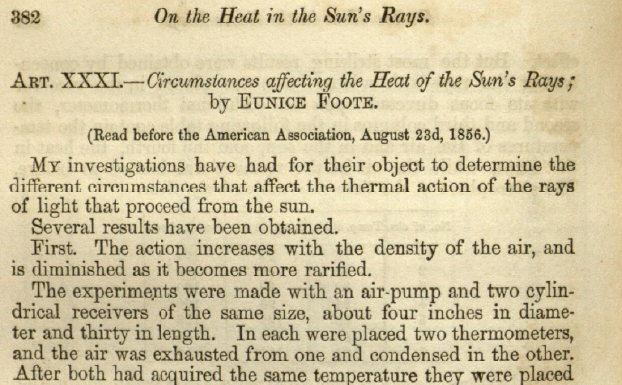June 30, 2021
Centre for Science, Technology, Environment, and Medicine Studies

Photo: Images of genes (red, green, and blue spots within the nuclei of HeLa cells) are artificially superimposed on images of multi-well plates.
Creator: Tom Misteli, Sigal Shachar, Murali Palangat. National Cancer Institute on Unsplash, January 15, 2020.
As a group we have been doing some research in the use of the history and philosophy of science as a strategy for teaching scientific concepts. This strategy does a number of things for students. First, it ‘humanizes science.’ This is important because this humanization seems to attract and retain traditionally underserved populations in the science. Second, it helps students become more effectively ‘science literate.’ They understand the nature of science, its strengths and more important, its limitations. With these understandings, students become citizens who are better able to judge the reliability of scientific claims and make better decisions based on their critique. For example, a member of the group has been implementing such a strategy in his survey geology course, introductory geology for non-science majors. He has found that describing geological concepts in terms of their history has been effective in facilitating students’ learning about the historical nature of the earth, the immense age of the earth and the complexity and dynamics of the earth.
In our virtual, almost monthly group sessions (due to the Covid-19 pandemic), participating students also developed a more nuanced understanding of science as a human process (based on the readings, discussions, and online lectures by co-convenors Drs. Dolphin, Stahnisch, and Wolbring). Related to this is the group’s work to convene a biennial conference at the University of Calgary campus. The International History and Philosophy of Science and Science Teaching Group (IHPST) explores the intersection of the history, philosophy and sociology of science within the context of science teaching. They have a biennial conference and the latest was to have taken place in early July 2021. However, due to the Covid-19 pandemic, the conference has been rescheduled for July 2022. The conference theme is Energizing Science Education with the History and Philosophy of Science, with presentations centering the concept and nature of energy in science. Of particular note is the collaborative and transdisciplinary dramatization commissioned for performance with students at the conference. The project brings together a number of historians and philosophers of science with personnel from the School of Creative and Performing Arts to create a play about four famous women scientists:
1. Eunice Foote (1819-1888), the first to discover that CO2 in the atmosphere would cause warming of the atmosphere.
2. Dollie Radler Hall (1897-1995), the first to discover oil using seismic energy.
3. Marie Tharp (1920-2006), the mapper of the world's oceans, who discovered the mid oceanic rifts which helped usher in the theory of plate tectonics.
4. Florence Bascom (1862-1945), the first woman to work for the USGS, and known primarily for teaching the next generation of women geologists.
The careers of these scientists have areas in parallel with each other as well as aspects distinctly different. In keeping with the theme (energy) and participants (historians and philosophers of science and science educators) some of the themes to be explored are:
1. The nature of discovery by each. The sea floor (Tharp) and the oil (Hall) were "discovered" or actually created using indirect methods (SONAR and seismic energy), while Bascom developed the “cycles of erosion” that helped geologists understand stratigraphy of earlier times, and Foote’s discovery was more of an implication from a set of experiments.
2. The nature of energy. Energy is a construct itself. Tharp and Hall relied on different kinds of energy (SONAR and seismic, respectively) to make their discoveries, while Bascom spoke of the energy of processes in the history of earth. Foote's experiments were about the conversion of light into heat and absorbing that heat using CO2 gas.
3. Fame. Of the four, probably Tharp is best known, though this would really only be in geological circles. Her maps of the seafloor helped usher in the theory of plate tectonics. Though the others have made tremendous contributions to their respective fields, they have been lesser known, with Eunice Foote becoming more popular recently, since people started to realize and document her contributions.
4. The role of gender in how these women became scientists, practiced their science and how history recorded (or forgot) them, though not their discoveries.
In addition, Drs. Hendrikse, Stahnisch, and Dolphin have been planning for a summer academy day for graduate students and trainees, which will represent the first day of the IHPST conference. The related History of Fort Medicine Project has seen Dr. Razumenko, Mr. Slater, Dr. Stahnisch and student RAs prepare an article for publication for Alberta History. Finally, some in the group have embarked on a future transdisciplinary project involving the School of Architecture, The School of Creative and Performing Arts, the Department of Geoscience and the Department of Geography. This multifaceted project also has ties to the local community within the Future of Stephen Avenue revitalization project.

Foote conducted experiments in the 1850s that demonstrated CO2 levels would influence the Earth's temperature.
Eunice Foote, “Circumstances Affecting the Heat of Sun’s Rays”, In American Journal of Art and Science, 2nd Series, v. XXII/no. LXVI, November 1856, p. 382-383.
Translation Studies
Translation Studies is by nature interdisciplinary, not only the purview of philology and linguistics, but also of literary studies, history, philosophy, semiotics and cultural studies, as well as being a creative act in itself. So the main goal of our working group was first and foremost to establish a supportive and collaborative space for those working on any aspect of Translation Studies, whether they were looking to enhance and expand their knowledge of the theoretical side of this trans-discipline, or wishing to discuss ways to become more skilled and thoughtful translators, or hoping to find new pedagogical methods of incorporating translation studies into teaching at all levels. A second goal was to start working towards establishing an interdisciplinary course on translation studies. What this would look like, what level it ought to be pitched at, where it would be housed, etc., were all questions we had in mind as we started our discussions in the fall of 2020.







